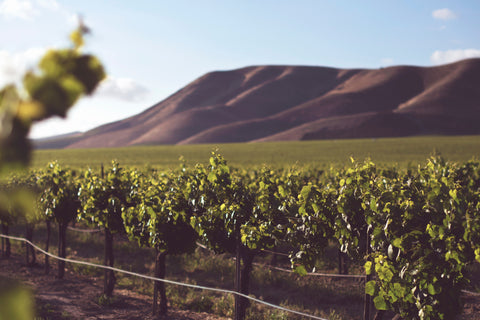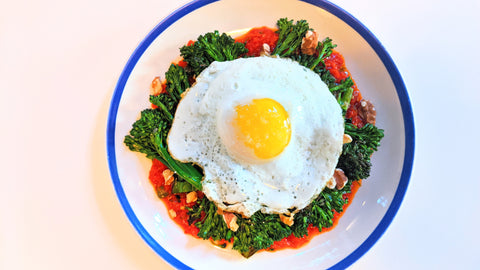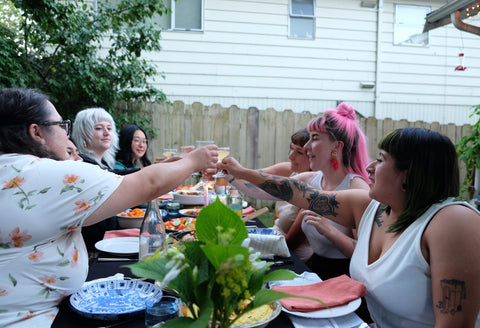
Here you are, a gorgeous day in Napa wine country.
For hours, you’ve walked the rows of a vineyard. You’ve let your fingers trace the grape leaves. Now, just for the fun of it, you decide to see if you can follow with your eye a single vine starting from where it roots into the earth, then moves up the trellis, and ends finally at one specific grape.
On your first try, you lose your way almost immediately. During attempt number two, a swirl of leaves leads you astray. But the third time, success! You manage to do it, navigating from the root along the tawny vine to end at last at the perfect green orb.
At this point, you’re probably wondering why we’d start a journal entry that’s supposed to be about low-intervention wine farming with a vignette like this.
The answer is that low-intervention farming (an admittedly vague term) is complex. It can imply a whole slew of diverse practices and terms, some of which are very specific, others less so. Untangling and understanding this terrain can be elusive – about as elusive as tracing a vine with your eye from root to grape.
In this primer, we offer insight on some of the terms you’re bound to see again and again as you traverse the world of low-intervention wines. May it serve you well.
“Organic,” or “Made with organic grapes?”
Right off the bat, a complicated one.
At first blush, “Organic Wine” and wine that’s “Made with organic grapes” might sound interchangeable. Rest assured, they are not.
In order for a wine to be USDA Certified Organic (and thus, Organic), it must adhere to a few strict guidelines. The grapes must be organically grown and the farm must be free from chemical pesticides and herbicides. Additives like yeast, acidifiers, and fining agents, must be organic, and the wine has to be GMO-free. That means that even sulfur, a natural preservative, cannot be included
By contrast, wines that are made “Made with Organic Grapes” may include up to 100 ppm of sulfites, giving them a longer shelf life than USDA organic wines. Barring this difference, though, there’s lots of overlap between wines that bear the USDA Organic seal and those that are “Made with Organic Grapes.”

The Flourishing Landscape of Sustainability
Because of the diversity of practices that fall under the umbrella of sustainability, different certifications can mean quite different things.
Still, most sustainability practices fall into categories like resource management (e.g., water and energy efficiency) or environmental impact (e.g., being good to the soil, protecting ecosystems, not spraying chemicals that harm non-target species). Additionally, some certifications fold in a human or societal component that includes things like preserving scenic landscapes or making contributions to the community at large.
Because there’s really no upper limit on just how sustainable wine production can get, fresh and creative methods continue to emerge. A few years ago, SevenFiftyDaily profiled some of these exciting new practices.
The article is well worth the read, but as a preview, you’ll find therein a living tasting room that works on 100% captured water and produces 10% more energy than it uses; a dry farming movement that aims to build irrigation-free vineyards; and no-till practices that bring rich biodiversity back to the farm. Very cool stuff!
Biodynamics: Homeopathy’s Groovy Viticultural Cousin
We’ve talked about organics. We’ve talked about sustainability. Now we enter the truly strange and mystical world of biodynamics.
Though technically a subset of sustainability, biodynamics sets itself apart with its near-homeopathic approach to viticulture. Grapes are grown with “energetics” and “vibrations” in mind. As Hilarie Larson of Wine Folly has noted, biodynamics “is the practice of balancing the resonance between vine, man, earth and stars.”
So, how exactly is this resonance-balancing achieved? Well, there are at least two important pieces.
The first has to do with special composts. First, a vintner gathers a collection of cow horns (yes, those pointy things on the heads of cattle). The horns are then filled with compost preps that might include manure, flower blossoms, nettles, and other natural ingredients. The vintner then buries the cow horns under the soil, later exhuming them and distributing the preps throughout the vineyard.
The second practice comes in the form of a special biodynamics calendar. Created by Maria Thun, the biodynamics calendar uses lunar cycles to define the best times of the month and year for sowing, tending, and reaping.
Delightfully, the calendar also splits days into four groups called Flower Days, Fruit Days, Leaf Days, and Root Days. According to the theory, if you imbibe on a Fruit Day, you’ll be in oenophile heaven. If you’re sipping on a Root Day, though, watch out! Your merlot might taste unaccountably sour.
Is it pseudoscience? Superstition? Vintner sorcery? We’re not here to say. But those who champion biodynamics swear the wine tastes better. And… well, we kind of agree.
***
Low-intervention wine is deep in the bones of the Nomadica mission.
In coming days, we look forward to showcasing journal entries featuring some of the farmers we’re lucky to work with and the low-intervention practices they use to help us bring you delicious wine in a can.
Until then, happy sipping!




